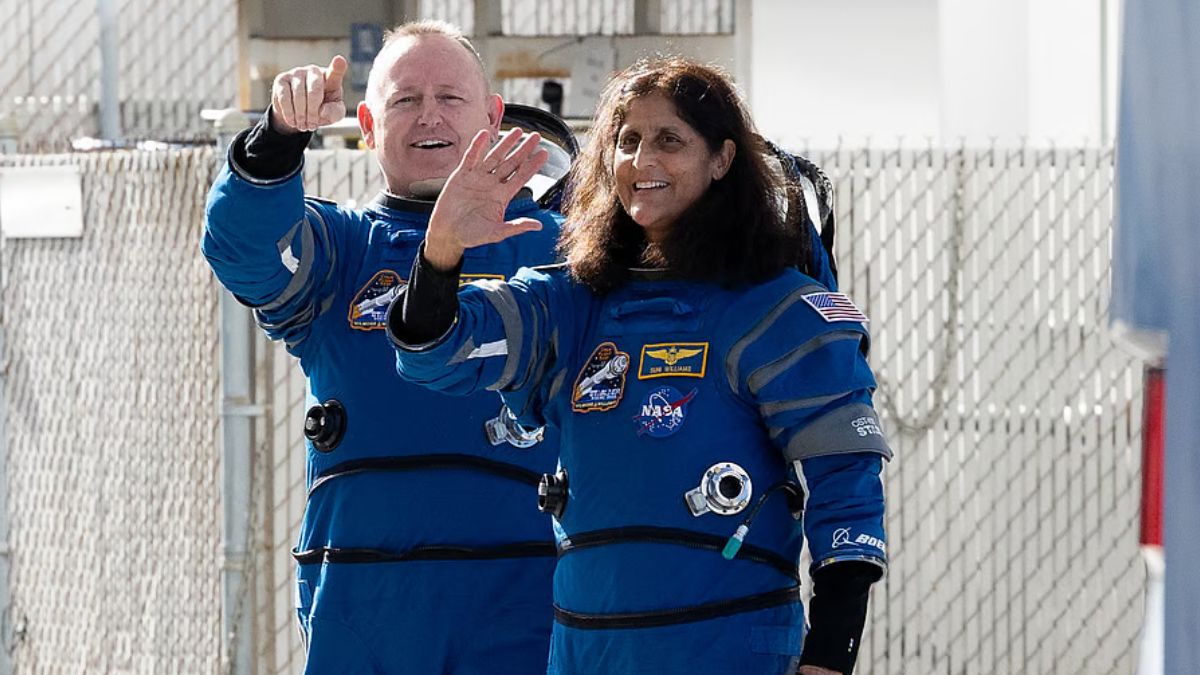The wait is almost over. After an unplanned nine-month stay in space, Indian-origin Nasa astronaut Sunita Williams and her crewmate Butch Wilmore are expected to return to Earth on Sunday, March 16.
What was meant to be a short eight-day mission turned into an extended ordeal after their Boeing Starliner spacecraft suffered a technical malfunction, leaving them stranded aboard the International Space Station since June 2024.
Now, thanks to a carefully coordinated rescue mission by Nasa and SpaceX, the astronauts will soon be back on solid ground. But how will their journey unfold? And what challenges await them once they land? Here’s what to expect.
Sunita William’s rescue mission
Nasa is gearing up to bring Williams and Wilmore back home, with the SpaceX Dragon spacecraft set to launch aboard a Falcon 9 rocket from the Kennedy Space Center in Florida at 5:18 AM IST on March 13.
The Dragon spacecraft will carry four Nasa astronauts as part of the Crew-10 mission, who will replace the current Crew-9 team aboard the International Space Station.
Leading the Crew-10 team will be Nasa astronaut Anne McClain as commander, alongside pilot Nichole Ayers. Joining them will be mission specialists Takuya Onishi from the Japan Aerospace Exploration Agency (Jaxa) and Kirill Peskov from Russia’s Roscosmos.
Once launched, the Falcon 9 will deploy the Dragon capsule for a nearly 12-hour journey to the ISS. Upon docking, the handover process will begin, with Williams, who has been the station’s commander, passing on ongoing science experiments and responsibilities to the new crew. This transition is expected to take a few days to a week.
After the handover is complete, Crew-9—including Williams and Wilmore—will board the Dragon spacecraft, undock from the ISS, and begin their journey back to Earth. The capsule will re-enter the atmosphere before making a controlled splashdown in the ocean, where recovery teams will be on standby to retrieve them.
Crew Dragon Freedom, carrying Williams and her team, is scheduled to undock from the ISS on Sunday, March 16, at around 6:30 PM IST. However, this timeline may shift depending on weather conditions at the landing site.
Also read: Trump calls Sunita Williams ‘woman with wild hair’: Can astronauts cut hair in space?
What will happen once astronauts return to Earth?
Spending nearly a year in microgravity is no small feat, but the real challenge for astronauts begins once they return to Earth’s pull.
Wilmore has admitted that even the simplest tasks, like picking up a pencil, will feel exhausting.
“Gravity is really tough, and that’s what we feel when we get back. It starts pulling everything to lower extremities; fluids will be pulled down, and even lifting a pencil will feel like a workout,” he told CNN.
Williams shares the same concern, acknowledging that adjusting to life on Earth after months of floating weightlessly won’t be easy.
“It’s gonna be a little bit hard to adapt,” she said. “It’s a day-for-day process when you get your fast-twitch muscle action back.”
Also read: Why gravity will be Sunita Williams’ biggest challenge after she returns to Earth
The sudden shift from weightlessness to Earth’s gravity can lead to feelings of extreme heaviness and discomfort.
Astronauts also experience what’s known as “baby feet,” as the thick calluses on their soles wear off in space due to lack of pressure. “You basically lose the thick part of your skin,” explained former Nasa astronaut Leroy Chiao.
Beyond that, dizziness and nausea are common struggles. Former astronaut Terry Virts described the sensation as feeling “really heavy and really, really dizzy.”
To help Williams and Wilmore recover, Nasa has designed an intensive rehabilitation programme focused on rebuilding strength and mobility.
This includes resistance training and balance exercises to restore muscle function, as well as cardiovascular conditioning using treadmills and stationary bikes to help the heart adapt to gravity again.
Neurological therapy will play a crucial role in regaining balance and coordination, while diets rich in calcium and vitamin D will support bone recovery.
Why were they stuck in space for so long?
Williams and Wilmore initially launched aboard Boeing’s Starliner capsule in June 2024 as part of its first-ever crewed flight test. The mission was only supposed to last about a week, but unexpected technical issues changed everything.
The Starliner developed helium leaks and problems with its propulsion system, forcing NASA to delay their return multiple times.
Also read: Sunita Williams’ return from space is delayed yet again. Here’s why
Eventually, NASA made the call to bring the Starliner back to Earth—without its crew. The capsule landed safely in New Mexico in September 2024, but that left Williams and Wilmore stranded aboard the ISS as officials worked on an alternative plan.
The prolonged delay even caught the attention of US President Donald Trump, who publicly criticised the situation. He reached out to SpaceX CEO Elon Musk for help.
“We have two astronauts that are stuck in space. I have asked Elon (Musk), I said, ‘Do me a favour. Can you get them out?’ He said, ‘Yes.’ He is preparing to go up, I think in two weeks,” Trump said.
He also made a lighthearted remark about Williams’ zero gravity look, adding, “And I see the woman with the wild hair, good, solid head of hair she’s got. There’s no kidding, there’s no games with her hair.”
Now, with their long-awaited return just days away, this unexpected and historic chapter in space exploration will finally come to an end.
With input from agencies
)